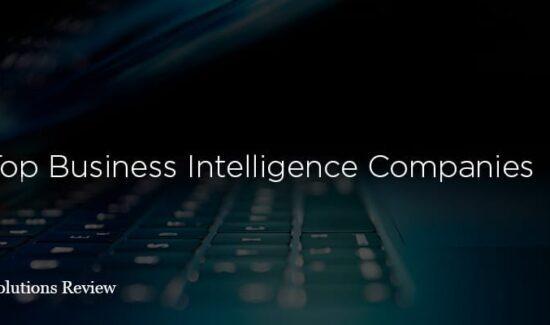An Introduction to AI Policy: Continuous Feedback & Evaluation

Solutions Review Executive Editor Tim King offers an introduction to AI policy through the lens of continuous feedback and evaluation.
Continuous feedback and evaluation are not an afterthought in responsible AI policy—it is the self-correcting engine that separates living, adaptive AI governance from static, compliance theater. Any AI system deployed into a dynamic human environment will evolve, decay, surprise, or misfire over time. Models drift. Data shifts. Edge cases become norms. Human-AI interactions generate unintended behaviors. If an organization lacks a persistent mechanism to monitor, measure, and adjust AI systems based on real-world feedback—especially from those affected most by the deployment—then it is not managing AI. It is hoping it behaves.
Continuous feedback is not about quarterly audits or occasional check-ins. It is a mindset and infrastructure commitment to make AI systems observable, accountable, and improvable over their full lifecycle. This means building in mechanisms to detect when an algorithm is no longer performing as intended—whether due to data degradation, adversarial inputs, feedback loops, or contextual shifts in the business environment. But it also means capturing the human experience of those systems: Do employees feel their work has improved? Are customers being served better or worse? Are frontline workers experiencing increased surveillance, stress, or decision fatigue because of new AI-powered workflows? These are not “soft” concerns. They are strategic signals that something is either working or failing in your socio-technical system.
Important: AI Won’t Replace You, But Lack of Soft Skills Might – Get Report
An Introduction to AI Policy: Continuous Feedback & Evaluation
This tenet demands more than dashboards and model metrics—it demands multi-layered feedback channels. Quantitative telemetry (latency, accuracy, error rates) must be coupled with qualitative human reporting—user interviews, anonymous surveys, escalation workflows, and embedded prompts for real-time feedback. Every AI system should be instrumented with user-facing mechanisms to report errors, opt out, or request human review. And that feedback must go somewhere actionable. It should not die in a shared inbox. Organizations need AI operations teams—AIOps—dedicated to triaging issues, retraining models, and responding to human pain points as part of ongoing system stewardship.
Critically, feedback must be multi-directional. Too many firms focus only on AI output performance—did the model predict well? But true evaluation requires looking at downstream human adaptation: Did the AI produce value? Did it change team dynamics? Did it increase inequity or entrench bias? Did people start gaming it, ignoring it, or becoming overly reliant on it? These second- and third-order effects are only visible through human-centered monitoring—and they are often more consequential than initial model performance.
Moreover, continuous evaluation should not be a neutral exercise—it should be anchored to clear ethical benchmarks and impact thresholds. If an AI system exceeds a certain harm threshold—false positives in hiring, unsafe outputs in generative media, degradation in team cohesion—it must trigger automatic governance responses: pause, escalate, review, retrain. This requires designing interruption architecture into AI workflows, not assuming that bad behavior will be caught by a well-intentioned human along the way. Many of the highest-profile AI failures occurred not because the system couldn’t be monitored—but because no one was empowered or required to intervene when things went wrong.
A contrarian but necessary point: AI systems should be considered incomplete by design. There is no such thing as a finished model—only a deployed hypothesis. Therefore, firms should treat every AI implementation as a minimum viable governance product—subject to immediate iteration based on lived experience. This iterative mindset, borrowed from agile software development and DevOps, must now be brought to ethical operations. In this context, CI/CD becomes CI/CE: Continuous Integration and Continuous Evaluation. Model updates must be paired with policy updates, and both should be logged transparently, with internal documentation and external auditability.
Furthermore, the most forward-looking organizations will not just passively collect feedback—they will actively simulate it. This means using AI red-teaming, scenario modeling, and stress testing in synthetic environments to anticipate failure modes before deployment. It also means engaging external stakeholders—civil society, regulators, even critics—in periodic evaluations of high-impact systems. Transparency without external validation is just PR. Continuous feedback must be continuous in its openness, not just its recurrence.
Continuous Feedback & Evaluation On AI Simulations
Simulations—whether scenario-based, role-play-driven, or digitally modeled—are one of the most underutilized but potent tools for responsible AI adoption. They serve as the organizational equivalent of flight simulators: safe, controlled environments where leaders, developers, and affected stakeholders can experience the potential outcomes of AI deployment before those outcomes harden into reality. When used correctly, simulations can expose blind spots, stress-test governance frameworks, and rehearse ethical dilemmas, all while cultivating a culture of adaptive learning. In the context of your five AI policy tenets, simulations aren’t just useful—they’re foundational.
Transparency in AI Deployment: Simulating Clarity Before Impact
Before an AI system ever touches production, simulations can model how decisions will be made, who will be affected, and where visibility may fail. For example, a hiring algorithm might be run on historical resumes in a sandbox environment, with simulated applicants requesting explanations or appealing outcomes. These simulated interactions can reveal gaps in explainability, inappropriate weighting of variables, or unintentional bias long before any real candidate is harmed. It also gives leadership firsthand insight into how their systems are perceived—and how transparent their policies feel in practice, not just on paper.
Simulations here also allow leaders to “see the system” as an end user would. If the output of an AI system is non-intuitive, unverifiable, or cannot be explained to a layperson in a dry run, that’s a red flag. The transparency test isn’t whether your engineers understand the model—it’s whether the person affected by the model understands how to challenge it. Simulations are where this understanding gets validated.
Prioritizing Human-Centric AI: Designing with Humans in the Loop, Not Just Testing Them Afterward
Human-centric AI cannot be engineered in isolation from human experience. Simulations bring real users—employees, customers, frontline managers—into the development process through role-playing exercises, human-in-the-loop test environments, or “AI shadowing” scenarios where humans operate as if the AI were live. This surfaces interface friction, psychological responses, trust breakdowns, and cognitive overload early.
A simulation may show, for example, that while an AI tool is technically accurate, it overwhelms a worker with alert fatigue or subtly undermines their professional confidence. You won’t catch that in a model validation test—you’ll catch it in a behavioral simulation. It also allows product teams to observe how people adapt to the AI: Do they over-trust it? Ignore it? Game it? These are critical design feedback loops that can only be accessed through immersive simulation.
Workforce Transition Support: Simulating Career Paths and Resistance Scenarios
Workforce transition planning often fails because it assumes linearity: the AI will replace task X, and the worker will learn skill Y. But real transitions are messier—emotional, political, and nonlinear. Simulations allow firms to model these transitions holistically. They can simulate what a day in the life looks like post-AI deployment, or how teams respond to role erosion, retraining mandates, or new collaboration paradigms. This allows leadership to spot morale drops, identify skill mismatches, and—critically—train managers on how to lead AI transitions with empathy and foresight.
Simulation can also be used to prototype new job roles and reskilling paths. Let employees test out hybrid roles with mock tools and future workflows. Their feedback becomes a living dataset for what’s feasible, desirable, or demotivating in a transformed workplace. In this way, simulations make workforce transition a participatory design process—not a unilateral change management rollout.
Ethical AI Governance: Rehearsing Failure, Dilemma, and Escalation
Governance isn’t just a static structure—it’s a muscle that must be exercised. Simulations allow firms to practice governance before the crisis. What happens when an AI system flags a worker for termination with low confidence? When a customer disputes an algorithmic decision and the explanation is unintelligible? When a model fails silently for months due to biased data? These scenarios can be simulated—internally or with external red teams—to identify whether governance mechanisms (like escalation paths, override tools, or audit logs) actually function under pressure.
This is where firms learn whether they have real ethical guardrails—or just paper ethics. A governance framework that hasn’t been tested in simulation is like a fire drill no one ever runs. The companies most likely to deploy AI responsibly are those that regularly rehearse what happens when things go wrong.
Continuous Feedback and Evaluation: Making Simulation an Ongoing Feedback Tool
Simulations don’t end at deployment—they evolve alongside the AI system. As models are retrained, policies updated, or new applications added, simulations provide a space to rehearse the impact of those changes without risk. They allow organizations to test new data governance policies, evaluate how updates affect explainability or user trust, or even simulate adversarial attacks to stress-test resilience. Simulation becomes the agile sprint review of AI ethics: not a one-time approval, but an iterative cycle of learning, testing, and evolving.
Moreover, simulation can be democratized. Allow end users or stakeholders to propose scenarios they’d like to see tested—“What happens if the model flags too many false positives on minority candidates?” or “What happens if AI guidance contradicts frontline intuition?” These bottom-up simulations create richer feedback loops and more inclusive governance.
The Bottom Line
Firms should offer continuous feedback and evaluation because AI deployment is not a one-and-done engineering task—it is an ongoing socio-technical experiment with live, compounding consequences. The moment an AI system goes live, it enters an unstable ecosystem: data distributions shift, user behavior adapts, regulations evolve, and ethical boundaries are stress-tested in real time. Without continuous feedback, firms are flying blind—unable to detect when systems drift off-course, harm begins to accumulate, or employees silently disengage. The best interest for firms lies not in merely keeping AI systems “on,” but in ensuring they stay aligned—with business goals, ethical expectations, user needs, and human dignity.
From a strategic standpoint, continuous evaluation protects against model degradation and context loss. AI systems trained on yesterday’s data can become dangerously inaccurate as customer behavior, market dynamics, or internal workflows change. Feedback loops from end users, operators, and impacted individuals serve as early warning systems—surfacing issues long before performance metrics or dashboards detect them. This saves reputational capital, legal exposure, and internal chaos.
From a human capital perspective, continuous feedback is also a trust-building mechanism. When firms invite employee and customer input, act on that input, and visibly adjust systems accordingly, they create a culture of responsiveness and psychological safety. Workers are far more likely to engage constructively with AI tools—and accept difficult transitions—when they know their lived experience matters in shaping the technology. This, in turn, increases adoption, reduces resistance, and improves the quality of hybrid human-machine work outcomes.
Firms that fail to build feedback into their AI deployments not only miss critical performance insights—they risk systemic failure. History shows that unmonitored systems silently drift into bias, overreach, and harm. Continuous evaluation makes AI less of a liability and more of a living asset.
To deliver this effectively, firms must go beyond surveys or once-a-year reviews. Continuous feedback should be multichannel, embedded, and real-time:
-
Multichannel: Capture structured and unstructured feedback from all levels—through interface prompts, anonymous reporting, employee councils, chatbot surveys, and user support interactions.
-
Embedded: Bake feedback options directly into the workflow. For example, let users flag AI decisions for review, annotate outputs with comments, or escalate for human override—all within the system itself.
-
Real-time and Iterative: Implement monitoring infrastructure that logs not just technical telemetry (accuracy, latency) but also user sentiment and behavioral trends. Use this data to drive continuous retraining of models, refinements of UI, and policy changes.
-
Bi-directional: Not just feedback to the firm, but feedback from the firm—communicating what’s been learned, what’s been changed, and why. This reinforces that feedback is not performative but consequential.
Ultimately, continuous feedback and evaluation is the cornerstone of resilient AI governance. It tells the world you’re not just deploying AI—you’re listening, learning, and adjusting. In an era where trust in automation is fragile and the cost of getting it wrong is high, that commitment isn’t just ethical—it’s essential.
Note: These insights were informed through web research and generative AI tools. Solutions Review editors use a multi-prompt approach and model overlay to optimize content for relevance and utility.



